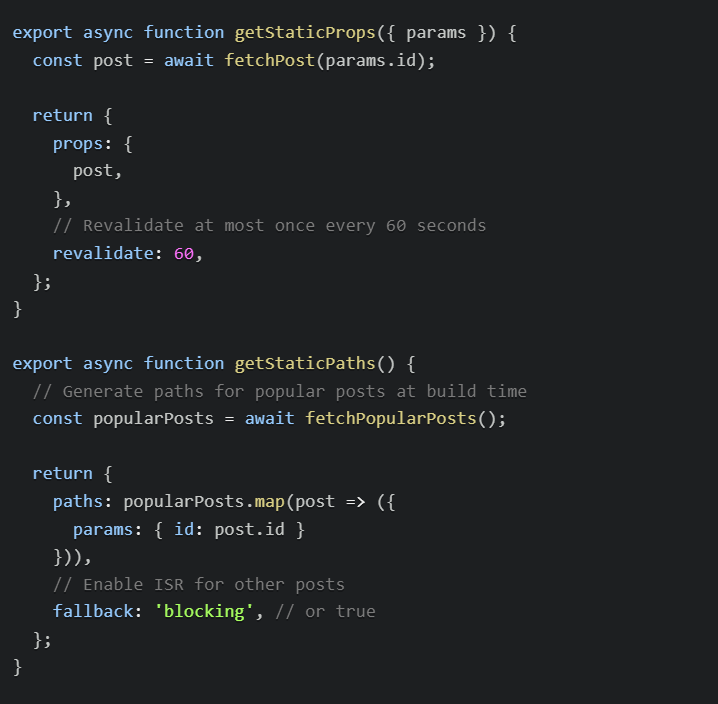Web Performance Optimization Technique - Incremental Static Regeneration
Incremental Static Regeneration (ISR) is a powerful feature in Next.js that combines the benefits of static site generation with the flexibility of server-side rendering. It allows you to update static content after your site has been built and deployed, without requiring a full rebuild.
Vivek Rastogi
8/15/20251 min read


Incremental Static Regeneration (ISR) is a powerful feature in Next.js that combines the benefits of static site generation with the flexibility of server-side rendering. It allows you to update static content after your site has been built and deployed, without requiring a full rebuild.
How ISR Works
ISR enables you to:
Generate static pages at build time for fast initial loads
Regenerate specific pages in the background when they're requested
Serve stale content while new content is being generated
Update content incrementally without rebuilding the entire site
Key Concepts
Stale-While-Revalidate: When a page with ISR is requested after its revalidation period, Next.js serves the cached (potentially stale) version immediately while generating a fresh version in the background.
Revalidation Period: You specify how long a page should be cached before it's eligible for regeneration using the revalidate property.
Implementation
Here's how you implement ISR in Next.js:


Benefits
Performance: Static pages load extremely fast since they're pre-generated and served from a CDN.
Scalability: You can handle high traffic without overwhelming your backend, as most requests are served from cache.
Fresh Content: Content updates automatically without manual deploys or full site rebuilds.
Cost Efficiency: Reduces server load and API calls since content is cached and only regenerated when necessary.
Use Cases
ISR is particularly useful for:
E-commerce product pages that need periodic price updates
Blog posts or news articles with comments or view counts
Marketing landing pages with dynamic content
Documentation sites with frequent updates
Any content that changes regularly but doesn't need real-time updates
The technique is especially powerful for sites with many pages where rebuilding everything would be time-consuming, but you still want the performance benefits of static generation.